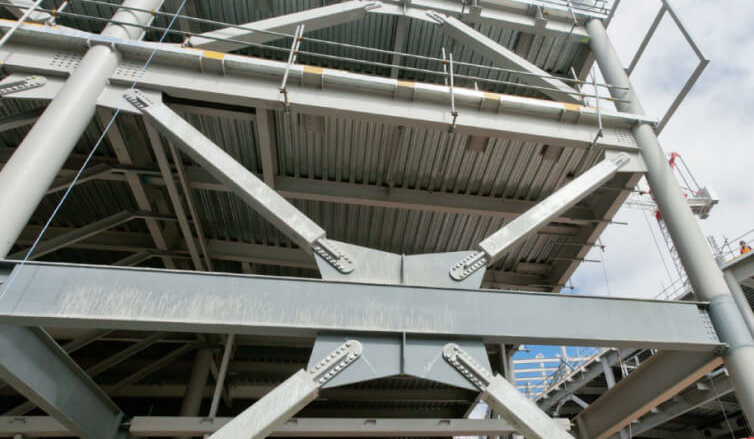There are typically two main components in seismic force-resisting systems.
- Horizontal System distributes lateral forces to the vertical elements
- Vertical system, which transmits lateral forces between the floor levels and the base of the structure.
The horizontal system can be comprised of diaphragms or a horizontal bracing system. In most cases, diaphragms offer a cost-effective and effective approach to resist and distribute seismic forces horizontally.
The stiffness of the diaphragm in relation to the supporting vertical seismic force-resisting system can range from flexible to rigid, and it is crucial to determine this stiffness. Ideally, the diaphragm is categorized as either flexible or rigid. However, if it cannot be categorized as either, its stiffness must be explicitly considered in the analysis. Typically, force distribution is evaluated using both rigid and flexible diaphragm models, and the worse case scenario is accounted for.
Flexible Diaphragm Conditions: The condition for a flexible diaphragm broadly categorizes different types of diaphragms that can be considered flexible. These categories include:
- a) Structures with rigid vertical elements like steel-braced frames, concrete or masonry shear walls.
- b) Single or two-family dwellings.
- c) Light-frame construction, which consists of walls and diaphragms made of light materials, with or without additional stiff toppings.
For category c, the requirement of complying with story drift limits along each line of shear walls indicates that the shear walls are strong enough to distribute loads based on the area they support and don’t need redistribution of torsional forces.
Rigid Diaphragm Conditions: The deemed-to-comply condition includes span-to-depth ratio limits as a way to indirectly assess the flexural contribution to diaphragm stiffness, emphasizing the need for a rigid diaphragm.
It is noteworthy to mention that the most inclusive approach for analyzing the diaphragm, in terms of assessing internal forces and distribution among vertical load-bearing systems, involves the integration of the diaphragm with its corresponding elements including beams, columns, and shear walls within a 3D finite element model. However, to expedite the calculation process for regular diaphragms without significant openings or closely spaced openings, it is preferable to adopt simplified methods such as the beam analogy.

